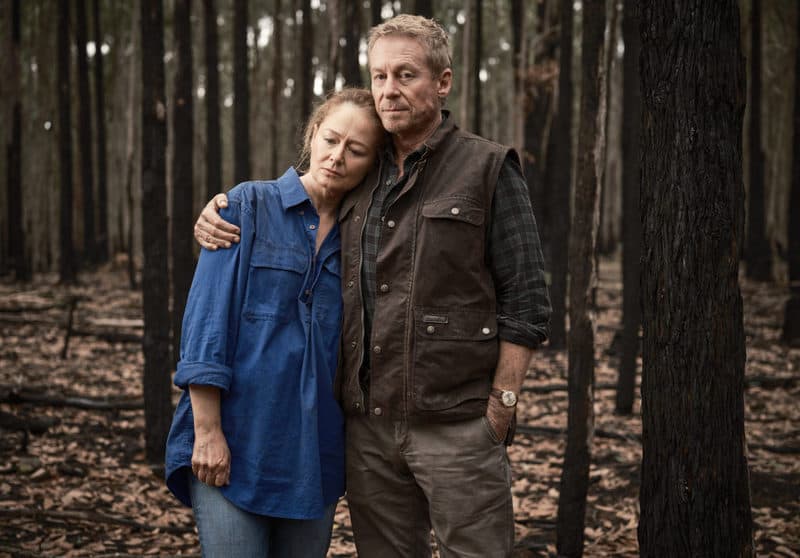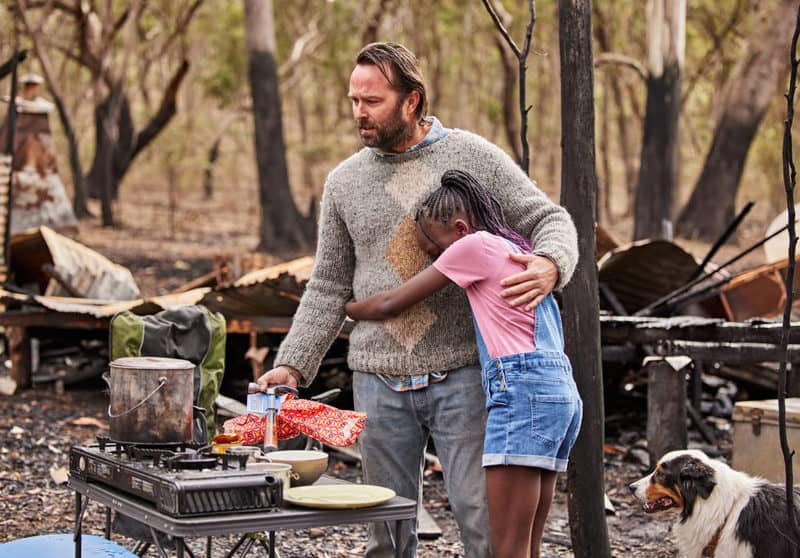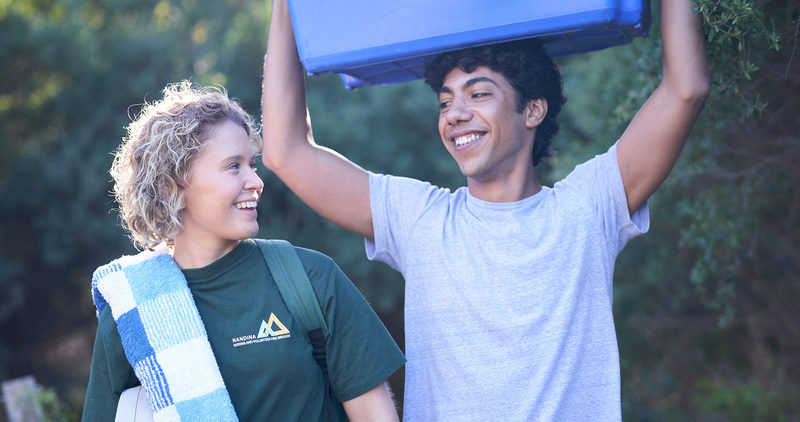Fires is the latest in a string of ABC Australian drama series that debuts this week. The series comes from Tony Ayres Productions with Ayres sharing co-creator credit with Belinda Chayko. Ayres was also the series executive producer with Chayko the showrunner and writer.
The six one-hour episodes are inspired by the stories of people at the front line of the Australian bushfires of 2019-20.
Mediaweek’s Andrew Mercado and James Manning spent time with Tony Ayres in the Mediaweek Studios for a special Fires podcast. Listen to the podcast here or it is available on all podcast platforms.
Don’t forget to subscribe to the Mediaweek Podcast to get the latest episodes downloaded to your podcast device.

Fires: Duncan (Richard Roxburgh) and Kath (Miranda Otto)
Photo: Ben King
Highlights from the Fires podcast:
Tony Ayres: “Belinda Chayko really wanted to make an anthology series with a serialised element. There are two things we did to achieve that. First and foremost with Eliza Scanlen and Hunter Page-Lochard (above) who are the two volunteer firefighters who viewers meet in episode one.
“They go through an extraordinary experience that bonds them and makes them want to keep helping people. This was true as there were many people who travelled down the coast from Queensland to NSW and then Victoria to help people.”
Casting Fires
“The nature of the show meant it was something of a call to arms for Australian actors, many of who have significant international profiles. Many of them had returned to Australia because of Covid and they wanted to do something here that was meaningful to them. We were so fortunate to get people like Sam Worthington, Anna Torv, Miranda Otto and Richard Roxburgh and many more. All our cast along with our production team just wanted to say something with this.
“In particular because what we feel is underlying the Fires story is such an urgent thing for us to be talking about. Not only as a country, but as a planet.”
More than people fighting fires
“We didn’t want to tell just the firefighter’s story, it was important to us to feature a range of experiences that people had. We were really keen to tell stories about ordinary Australians caught in a global catastrophe who had to somehow survive and get on with their lives.
“We couldn’t have six hours of people fighting fires. We looked at how people dealt with the loss of property and how did people make a decision whether to go or stay.”
Ayres said the series culminates with the mass evacuation in Victoria and the enormous scale of those bushfires.

Firs: Doug (Sullivan Stapleton) and Adut (Ameshol Ajang)
Photo: Narelle Portanier
Key messages that make Fires important
As to how the producers tackled the challenge of making a show like this without wanting to make it difficult to watch, Ayres said: “We were very mindful first of all in our consultations with the firies. There are warnings at the start of episodes and then advice about how to get support if needed at the end. We were very conscious this could be triggering for some people.
“We think the key messages of the series are important. One is that ordinary people step up and do incredibly heroic things. Also at the end of the day the way people survive is through communities which was a recurring story through the research we did.”
Too soon? ‘We can’t afford to wait’
Ayres noted that in the past movies about things Vietnam and AIDS came out some time after the events. “We can’t afford to wait to talk about this. There is not going to be a planet if we wait for 20 years to talk about this.”
To help with making sure that people would not be traumatised by the series, Ayres said they fictionalised their stores and even fictionalised the locations.
Dreamscreen: Fires’ special effects
People watching the show, particularly during the first episode, might be amazed at how the producers recreated some of the bushfire sequences.
“This was a first for me,” admitted Ayres. “We used technology called Dreamscreen that Clayton Jacobson in Melbourne is championing. It is extraordinary. It is the technique that The Mandalorian used. It is normally way beyond what an Australian budget could tolerate. We projected fire on floor to ceiling HD LED screens. There was no way in the world we could replicate real fire. Apart from everything else it would be very irresponsible to start a bushfire. We then were able to have embers and real smoke in the three-dimensional space between the screens and the actors.”
